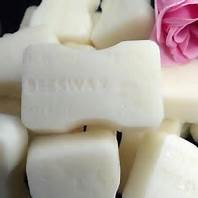How to De-Puff a Bloated Face










How to De-Puff a Bloated Face
I love a good midnight snack, so it was a huge bummer when my mom prevented me from eating after hours. She’d give me one of her finger-wagging lectures, warning me about a puffy, bloated visage come morning. On the days that I would defiantly cave to my late-night munchies, I soon discovered that her admonition wasn't an urban myth. Eating any sodium-laden meal would indeed make my face look...puffy.
Provided by Marie Claire US null
“Eating sodium can cause our bodies to retain water, as it tries to make up for the added salt and even out the tonicity (or concentration) in our system,” explains Dr. Anthony Youn, a holistic plastic surgeon in Troy, Michigan. Sadly, there's really no known way to completely prevent bloating when eating delightfully salty fare—or drinking alcohol, or sleeping badly, both of which can leave your face looking puffy—but there are ways to counteract the effect and minimize the appearance of fluid retention later. In addition to Dr. Youn, I also contacted New York City–based dermatologist Dr. Dhaval Bhanusali, to get the best anti-puffy face tips, right from the experts.
1. Sleep with an extra pillow.
The slightly elevated angle could help overnight. “I tell patients to add an extra pillow to fight against gravity,” says Dr. Bhanusali. “This is one of the easiest ways to prevent bloating because it reduces the amount of fluid that retains in the face.” Cover your extra pillow with an antibacterial pillowcase, like the one below, which is made with conductive silver (which acts as an anti-inflammatory).
2. Splash your face with cold water in the morning.
Nothing like an icy face bath to wake you up and get your blood flowing. According to Dr. Bhanusali, the cold temperature is a quick way to tighten pores and vasoconstrict the vessels (meaning, drive the fluid out) in your face, helping the swelling go down.
3. Roll your face.
Some face-rolling advocates claim that the motion of the stone on your face can balance your aura, clear toxins, and stimulate collagen. Science can’t confirm that, but it sure does give one hell of a lymphatic massage. So, can’t hurt right?
“Most salt-induced puffiness that we see is concentrated around the eyes,” says Dr. Bhanusali. “De-puffing the eyes can be done using a jade facial roller. Place the roller in the refrigerator to make it cold, then roll over your puffy eyelids for several seconds. This can push out swelling.” Combine the jade roller with a facial massage to further reduce inflammation.
4. Undergo a green tea and potato treatment.
This one requires a grocery visit beforehand, but it’s worthwhile. Dr. Youn describes how it works: “Steep some green tea, put it in the fridge to get cold, cut a white potato into several slices, and dip them into the cold green tea. Then, apply the saturated potato over your eyelids. The cold temperature and caffeine will quickly de-puff the eyes, especially when paired with the antioxidants and starch.” Bonus: You can drink the green tea after for an extra (ingested) boost of antioxidants.
5. Slap on a LED mask.
If you have time, indulge in some light therapy. Red LED lights have been shown to have significant anti-inflammatory effects, and can stimulate the natural production of collagen and elastin.
Reference: Marie Claire: Hana Hong.
Articles-Latest
- Skin tags: Why they develop, and how to remove them
- So That’s Why Your Skin Gets Crepey As You Get Older
- Eye Infection from False Eyelashes
- Teeth stain removal and whitening solutions
- Benefits of collagen for skin
- Why vitamin E should be part of your skincare regime
- Can gray hair be reversed?
- Hair loss affects 1 in 10 women before the menopause – here’s how to treat it
- Conscious ageing and Black skin: What happens when Black does crack?
- Your skin color may affect how well a medication works for you — but the research is way behind
- The C word Cancer
- Astringents
- How does light therapy work? The science behind the popular skincare treatment
- The Most Offensive Fashion Police Criticisms of All Time
- Everything you need to know about lip filler migration, as told by the experts
- Pig semen and menstrual blood – how our ancestors perfected the art of seduction
- Everything you need to know about benzoyl peroxide
- We've bleached, relaxed, and damaged our hair to make ourselves look more white
- Will this be the year that facial filler is cancelled?
- Shock of the old: 10 painful and poisonous beauty treatments
Cosmetic ingredients
LOGIN
Who's On Line
We have 125 guests and no members online
Articles-Most Read
- Home
- White Bees Wax
- Leucidal
- Cosmetic Preservatives A-Z
- Caprylyl Glycol
- Cosmetics Unmasked - How Safe Are Colorants?
- Cosmetics Unmasked - Choosing Ingredients
- Cosmetics Unmasked - Colorants And Fragrances
- EcoSilk
- Toxic Beauty - Who's Looking At Cosmetics?
- Cosmetics Unmasked - Fragrances
- Microbes and Cosmetics
- Chemicals Lingering In The Environment
- Microbes and Safety Standards
- Yellow Bees Wax
- Potassium Sorbate
- Toxic Beauty - Hazardous To Your Health
- Synthetics In Cosmetics - The Industry Fights Back
- Fresh Goat's Milk Soap
- What's Happening in the USA - Cosmetic Regulations - Toxic Beauty
- Active Ingredients
- Cosmetics Unmasked - Listing Cosmetics
- Toxic Beauty - Cocktails and Low Doses
- Natural Waxes A-Z
- Natural Butters A-Z




